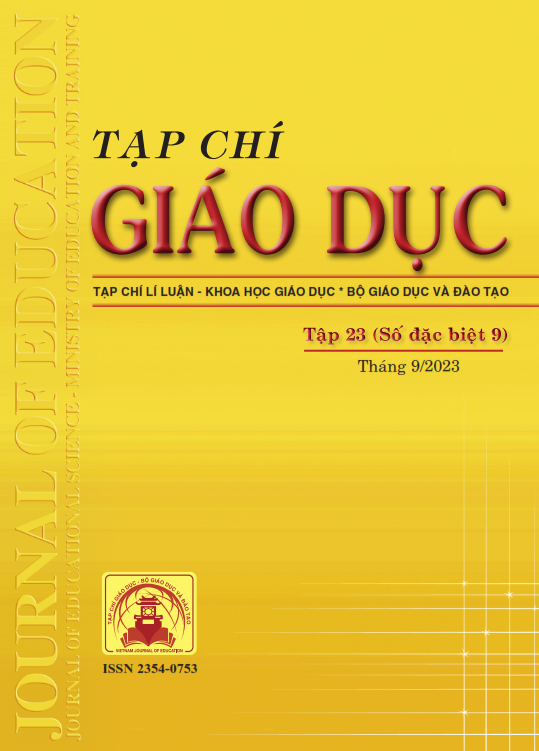Thực trạng và biện pháp tổ chức hoạt động tạo hình cho trẻ 5-6 tuổi theo phương pháp Reggio Emilia ở một số trường mầm non thành phố Trà Vinh, tỉnh Trà Vinh
Tóm tắt
Preschool activities play an important role in the all-round education of children. Reggio Emilia model with outstanding advantages, emphasizes the potential of children, creates an environment with many different resources for children to express their creativity in art products; however, this model has not been known and used by many teachers in preschools. The article presents the results of a survey on the perception of preschool teachers, the difficulties they face when applying the Reggio Emilia model in shaping activities for children; the actual implementation of the content, methods and forms of shaping activities in preschool. The experimental results of applying the Reggio Emilia model in shaping activities show that the feasibility of the research direction, the level of development of children's shaping skills has improved significantly. This is the basis for proposing measures to organize shaping activities for 5-6-year-old children according to the Reggio Emilia model.
Tài liệu tham khảo
Bộ GD-ĐT (2021). Văn bản số 01/VBHN/BGDĐT ngày 14/4/2021 Thông tư ban hành Chương trình giáo dục mầm non.
Danielle, C. (2019). Ideas for Getting Your Kids into Nature. https://childmind.org/article/ideas-for-getting-your-kids-into-nature/
Edwards, C., Gandini, L., & Forman, G. (2004). The hundred languages of children - The Reggio Emilia approach - Advanced reflections. Greenwood Publishing Group.
Helm, J., & Lilian, G. K. (2001). Young investigators: The Project Approach in the early years. New York, NY: Teachers College Press.
Katz, L. G. & Chard, S. D. (1992). The Project approach. University of Alberta Edmonton, Alberta Canada.
Lê Thanh Thuỷ (2016). Giáo trình phương pháp tổ chức hoạt động tạo hình cho trẻ mầm non. NXB Giáo dục Việt Nam.
Lê Thanh Thuỷ (2023). Giáo trình Phương pháp tổ chức hoạt đông tạo hình cho trẻ mầm non. NXB Đại học Sư phạm.
Nguyễn Thị Thành (2022). Giới thiệu hướng tiếp cận Reggio Emilia và ứng dụng trong bối cảnh đổi mới giáo dục mầm non tại Việt Nam. Tạp chí Giáo dục, 22(6), 20-25.
Reggio Emilia Approach (n.d). Educational experience in Reggio Emilia has its origins in the late nineteenth century. Women played a fundamental role in this history. https://www.reggiochildren.it/en/reggio-emilia-approach/ timeline-en/
Rinaldi, C. (2013). Re-imagining childhood - The inspiration of Reggio Emilia education principles in South Australia. Adelaide Thinker in Residence.
Thornton, L., & Brunton, P. (2014). Bringing the Reggio approach to your Early Years Practice (Series adited by Sandy Green). Routledge Publishing.
Trần Thị Hằng (2017). Phát triển khả năng sáng tạo của trẻ trong hoạt động tạo hình của trẻ mầm non theo phương pháp Reggio Emilia. Tạp chí Giáo dục, số đặc biệt tháng 8, 42-44.
Đã Xuất bản
Cách trích dẫn
Số
Chuyên mục
Giấy phép
Bản quyền (c) 2023 Tạp chí Giáo dục

Tác phẩm này được cấp phép theo Ghi nhận tác giả của Creative Commons Giấy phép quốc tế 4.0 .












